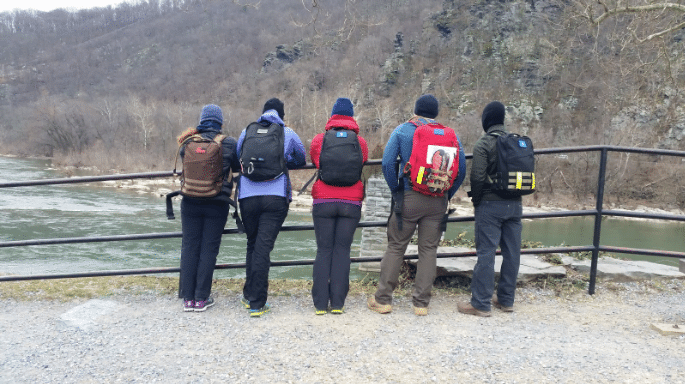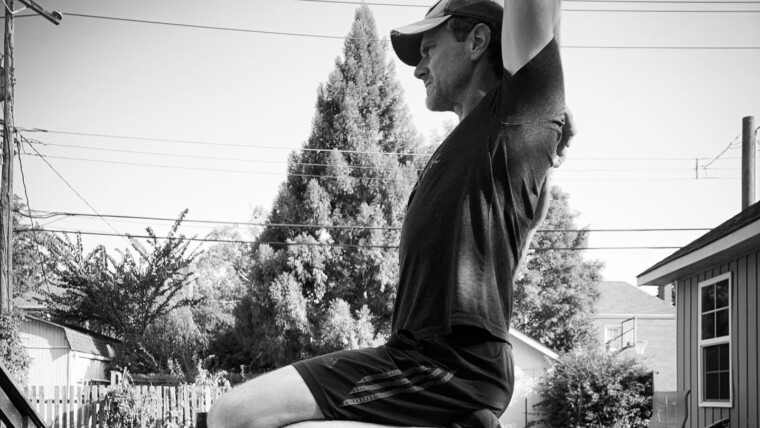For many years, rucking has been the fitness choice for those who’ve tried it all and want a new challenge. Ruck marching, as it’s known in armed forces, is a grueling complete body workout designed to test stamina and endurance.
With weighted rucksacks strapped to their backs, tenacious ruckers embark on miles-long walks. One of the greatest benefits of rucking is that ruckers set their own pace. New ruckers get started by walking a couple of miles consistently, per week. Every week, they progressively add more weight or miles.
This post explores focuses on some of the dos and don’ts of rucking.
What To Do
Use A Hip Belt
Ruckers are challenged to gradually build up their pack’s weight, it eventually becomes no longer sufficient to sling a bag over your shoulder and set off. In order to protect your shoulders and back on a march, consider wearing a rucksack with a built-in hip belt. It helps to distribute the weight across your body, which allows you to push the weight with your legs and entire body as opposed to just your shoulders.
Protect Your Back
If the weight is not carried correctly over those long distances, the ruck can end up in severe pain and soreness. To go the extra mile and ruck for longer, you may want to get yourself the right rucksack for the job. (We at Rucking.com are fond of GORUCK rucksacks.)

It should be lightweight – with the exception of the ruck weight – and include proper adjustable shoulder straps and a hip belt. Take some time to make sure your rucksack fits you. It should be well adjusted before you start your ruck.
Moreover, minimize the number of times you are taking it off. Pack essentials in easy to reach pockets, so that you don’t need to put the rucksack on and off. Every time it gets removed, the weight keeps on shifting and ruins that comfortable fit you started with.
Protect Your Feet
Just as essential as protecting your back is, protecting your feet is just as important. They’re your comrades. You can’t go through a ruck without them. It’s definitely worth investing in good quality rucking boots. (Here’s our review of the GORUCK Rucking Boot, which we love.)
If you do have pain when you walk, look into wearing proper boot insoles which will further prevent pain and help your endurance. Remember, break into your boots before using your new boots for a ruck to prevent blisters.
It’s a tradition for rucking veterans to put on two pairs of socks when rucking. There’s a good explanation for it. Doubling up reduces friction and prevents the build-up of sweat that could potentially lead to blisters it works best is the inner socks are thin (polyester, nylon, silk etc) and outer socks are made from wool.
Alternatively, you can wear a single pair of socks made from merino wool. Socks made from merino wool work great for both cold and warmer climates. Just in case you’re more prone to blisters than others, be sure to pack some band-aids to cover them up to avoid making them worse.
(See also: Our tips on Caring for blisters during and after a ruck.)
Stretch
While you probably won’t be sprinting or jogging, rest assured that rucking is an intense body workout. When you’re a few miles into your ruck, your muscles will be stimulated and may become sore (in a good way). Your legs will definitely get the workout you’ve been looking for.
To get ahead of the game, be sure to stretch after you’ve warmed up and after your workout. Take a few minutes to stretch your legs, abs, and shoulders. This is because as you work out your muscles, you build up lactic acid which makes the muscles fatigued and sore. Stretching eliminates the lactic acid build-up and prevents DOMS (delayed onset muscle soreness) while also relaxing your muscles.
(See also: Four simple tips for post-ruck recovery.)
What Not To Do
Don’t Wear Your Brand New Boots
Finding out what happens when you ruck in brand new boots is a tough lesson. It’s tempting to put on your ‘new’ boots as soon as you get them. But it’s the fastest way to get those blisters. Instead, wear them for your first mile or two, and then switch back to your old boots. Repeat this a few more times till you eventually break into your boot and feel like they’ve been stretched out properly to fit your feet.
Steadily Increase the Weight
Rucking is extremely rewarding, however, it’s important not to push yourself too quickly. Injuries are typically caused when ruckers skip steps and increase their weight too fast. As tempting as it is to carry more weight, it can hinder your performance long run should you take on any injuries.
(Note: We love using the GORUCK Ruck Plates to add weight to our rucks.)
Instead, if you want to guarantee yourself to build muscle strength, fitness, and endurance, be patient. Check out our beginner’s guide to rucking, regardless of your fitness level.
Don’t Ruck Everyday
Beginners are very much discouraged from rucking every day. A few advanced ruckers do ruck daily in an effort to increase their weight load. However, the majority treats rest and recovery as the most important component in their training program.
Most ruckers train twice or thrice consistently per week. They use the days in between to relax, refuel with a healthy diet packed with protein, carbs, and fats.
Don’t Pack Heavy Weight Away From Your Back
This is a useful tip for those just starting out. When rucking, it is recommended to place heavy items on the top of their packs. The heaviest items always go closest to the top of the rucksack and closer to the body. This reduces the chance of you becoming imbalanced. According to the US Military, this simple trick is used by its soldiers and can give you 25% more energy on a ruck. If possible, pack the heaviest weights high up and in close proximity to your shoulders.
This article was submitted by Adam Sheriff. Looking to learn more about rucking? Check out Adam’s website, RuckForMiles for the more tips.








2 Replies to The Dos and Don’ts of Rucking
Appreciate your article, definitely some good info for those looking to get some miles in. I don’t necessarily agree that the Goruck packs are the best way to go in terms of rucking. They are well made but lack any actual frame for any load transfer to your hips.
I think it is much safer and more efficient to look into a proper pack designed to carry weight over distance.
Thanks again.
Comments are closed.
Best Rucking Gear on Amazon.com
Training Program for New Ruckers
What are the Best Shoes for Rucking?
Rucking for Beginners: A Complete Guide to Getting Started
What is Rucking?
Is Rucking Better Than Running?
Best Rucking Backpacks List
How Many Calories Do I Burn Rucking?